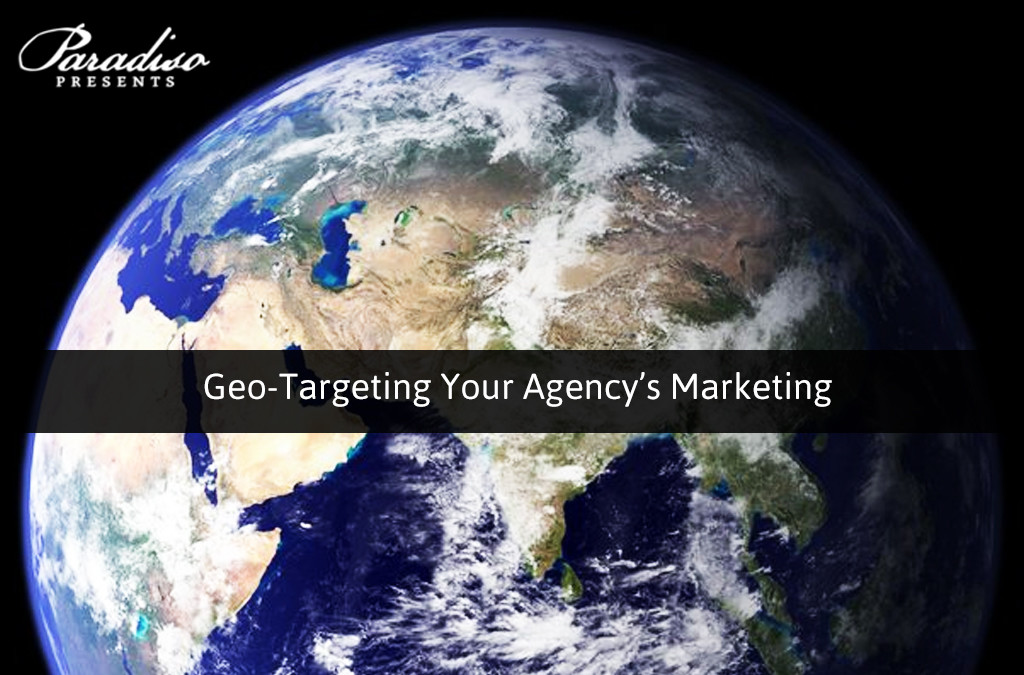Data is your agency’s most valuable asset, and I can almost guarantee that they are being underutilized. Let’s talk about location data, geo-targeting, and geo filters (which are filters based on location that let mobile users add a location illustration, specific to where they are by town or city, neighborhood, or even store or restaurant). The smartphone’s location signals pick up where the user is at a given time, and the appropriate geofilter is offered based on this location. Location-based technology is opening up a world of possibilities for marketers and retailers, but it’s also very complicated, as new capabilities and use cases seem to emerge on a daily basis.
With all this new location technology, marketers are trying to break down some of the most important “geo” concepts to provide a better understanding of the basics. So with that being said let’s dive into what Geo-Targeting really is and how will it affect our insurance agencies in the future.
What is Geo-Targeting?
Let’s start by defining Geo-Targeting: geo-targeting is the practice of delivering content (advertisements and/or messages etc.) to a user based on his or her geographic location. This can be done on the town or city or zip code level via IP addresses or device ID’s, or on a more granular level through GPS signals. A great example to help you understand this is go into your insurance agency and get onto Facebook from within your office and click on the checkin button and your agency will pop up.
Marketers and retailers geo-target users on their always-present mobile devices because each person’s location has something to say about their environment and where they are and their mindset at a given time, which makes it easier to deliver relevant advertising content. The idea is that the more relevant an ad or an offer is, the more likely it is to drive what the marketer wants: a sale (in many instances), or in our case, driving them into our insurance agencies. Just think of the power we will have if we can put great content in front prospects while they are near your office.
Practical Applications of Geo-Targeting
The central idea behind geo-targeting is that understanding a consumer’s real-time and/or past location helps marketers/retailers and insurance agency owners achieve the holy grail of delivering the right message and/or content at the right time. Yes, the key is making sure we deliver the proper content and in most cases it is not talking about your new BOP product. In a simple example, an adult customer visiting a car dealership is likely interested in purchasing a new or used car, and serving a local Ford ad to this prospect is more likely to be successful.
Serving a Ford ad to someone at or near a local car dealership (even if its a Chevy dealer) is an example of geo-targeting on a hyperlocal level, but it applies on a larger scale, too.
In the good ole days of print, taking out an ad in the Detroit Newspaper allowed businesses to know that primarily Detroit area residents who could actually visit the business would see the ad in question. This was great in those days, but in today’s mobile world everything has changed. The era of mobile ads has disrupted traditional marketing, and continues to change the world of marketing. When marketing is delivered indiscriminately and without location context, it can be less successful because it might not be relevant or personable. It doesn’t stop there; traditional ways of print often lack the ability to track results. Ad creative targeted at (and customized for) an Indiana consumer versus a California customer is likely to be more effective in driving a physical sale.
In more sophisticated use cases, geo-targeting doesn’t have to be solely based on a consumer’s real-time location. Locations or businesses a customer and or prospect has visited recently can be a great predictor of interests and intent, so adding targeting based on historical (gathering the history of the data is very important) location as well can be key to delivering a captivating, relevant message.
How some businesses are using geo-targeting?
In an example of a particularly successful geo-targeted mobile ad campaign, is Geico. They are using Geo-Targeting based on where their billboard ads or their online ads (when you check in at or near one of their insurance offices). They are targeting prospects based on location, and that is helping them have a better chance of capturing that insurance policy. Just think, if we independent insurance agencies bought ad space near Geico’s billboards, or had ads pop up in or near Geico retail locations. we could really have an opportunity to earn that insurance business.
Geo-targeting is a practice frequently deployed by restaurants, retail giants, and brick-and-mortar businesses looking to drive local foot traffic, but it isn’t exclusively the province of these verticals. Even major league sports teams have gotten in on the action, targeting fans that are at (or have been to) a particular stadium, field, arena or event in order to drive ticket sales, app downloads, and more. Geo-Targeting is big, and it’s only going to get bigger. My question to you, the insurance agency owner, is have you at least sat down with someone to talk about the opportunity to Geo-Target? If not, I would tell you to get out of your seat and at least explore the amazing opportunities that are out there. As businesses and brands continue to explore the possibilities of targeting users based on location, both real-time and historical data, consumers will likely see a lot more content that is truly relevant to their lives and marketers will take advantage technology to boost more opportunities and close more business.





